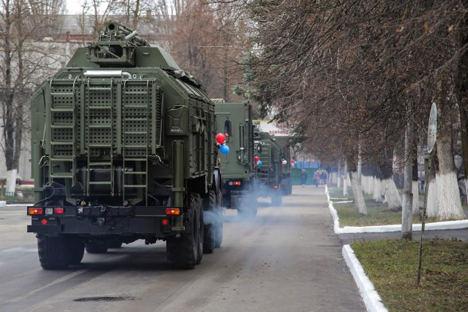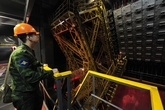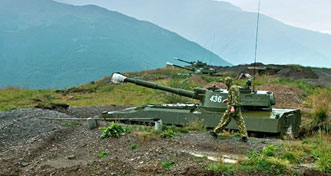Russian military makes strides in electronic warfare

A unique electronic warfare system Krasukha-4. Source: Rostec.ru
Air forces, as well as other branches of the armed forces of leading countries in the world, utilize many electronic systems. However the advantage of electronics as a highly effective combat weapon is diminished because of its vulnerability. As we know, any radio signal can be jammed.
The Russian company Radioelectronic Technologies Group (KRET) has partially solved this problem by developing a unique electronic warfare system called Krasukha-4, which is already being supplied to troops.
The Krasukha-4 was developed to operate in strategically important areas where the reconnaissance aircraft and spy satellites of opponents are particularly active. According to open sources, the effective radius of the system is more than 300 km (186 miles).
"The system creates an environment where it is very difficult for an enemy to shoot at our aircraft or shoot down a plane. It is 99 percent impossible," said Nikolai Kolesov, KRET chief executive officer.
The antennas of the Krasukha-4 are mounted on a four-axel KAMAZ all-terrain vehicle. This mobile unit can operate in the Arctic Circle as well as in the Arabian desert. It is guaranteed to work reliably at temperatures from minus to plus fifty degrees centigrade.
Taking into account the modern-day situation on Russia’s borders, one of the main goals is to effectively counter attacks from potential enemy aircraft.
Oleg Antonov, the director of Aviakonversiya, which develops electronic equipment for defense, said jamming just the signals of satellite navigation systems would effectively counter attacks from potential enemy aircraft.
According to him, foreign pilots are not trained to fly without these systems, and jamming satellite navigation signals would make it much more difficult or even impossible to navigate and operate in adverse weather conditions.
Related:
Russia to overhaul its nuclear missile shield
And if these signals are jammed, the opponent would end up without communications, without the ability to identify aircraft, without intelligence, etc. In addition, this would significantly complicate the use of guided weapons, which are directed to their destination using satellite navigation.
Aviakonversiya has found a way to effectively disrupt enemy radio signals. The company has created a special device that simulates the signal of the jammed system. For example, instead of the satellite signal, the navigational equipment would pick up a similar signal from an electronic warfare station. It is almost impossible to counteract this type of signal disruption.
Aviakonversiya developed the Zontik ('Umbrella') territorial defense system (TDS) to provide comprehensive electronic warfare coverage over a particular territory. Its main task is to prevent attacks using modern precision weaponry and to interfere with enemy aircraft.
Antonov believes that two units deployed in South Ossetia equipped with electronic warfare systems would effectively interfere with NATO aircraft that may be based on the territory of Georgia.
Two jamming devices located near Leninogori village (about 40 km from Tbilisi), according to Antonov, working together, could make it difficult to fly and carry out combat aviation operations over a considerable part of Georgia. If similar systems were deployed in Abkhazia, the whole territory of the neighboring state would be "under attack" by electronic warfare.
Of course, NATO has not announced plans to construct military bases in Georgia, however, it is possible. Regardless, modern electronic warfare will only become more of a necessity in the near future. Moreover, if current trends in military electronics continue, electronic warfare will become an even higher priority than other systems.
All rights reserved by Rossiyskaya Gazeta.
Subscribe
to our newsletter!
Get the week's best stories straight to your inbox

